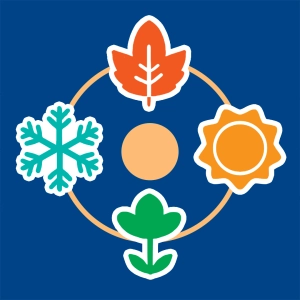 Solar irradiance
Solar irradiance
Learning objectives
- To observe the Earth’s rotation in a geocentric frame of reference.
- To understand the meaning of the tropics.
- To link the changing seasons to the Earth's axial tilt.
- To understand how the duration of daylight changes with the seasons.
- To show that the Sun’s rays that strike the Earth vertically (when the Sun is at the zenith, at noon) pass through less of the atmosphere, and so deliver more energy at the surface of the Earth.
The seasons change according to the amount of sunlight reaching the surface of the Earth. The Earth’s axis is tilted as it revolves around the sun. Summer occurs when a hemisphere is tilted towards the sun. The Tropics of Cancer and Capricorn mark the regions of the Earth where the Sun reaches the zenith at least once a year.
Note: This animation takes a geocentric view of the Earth, and so the axis oscillates during the course of the year. Were a heliocentric view chosen, the Earth’s axis would have a fixed inclination throughout the year.

Discover EduMedia for free
The interactive encyclopedia that brings science and math to life in the classroom.
Over 1,000 resources





